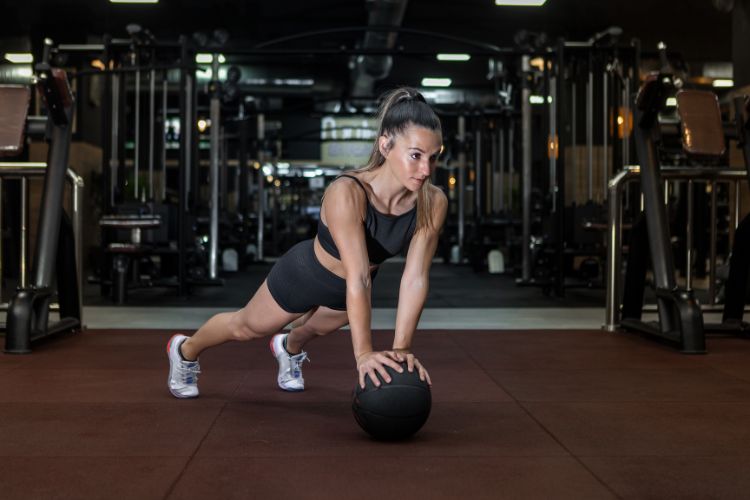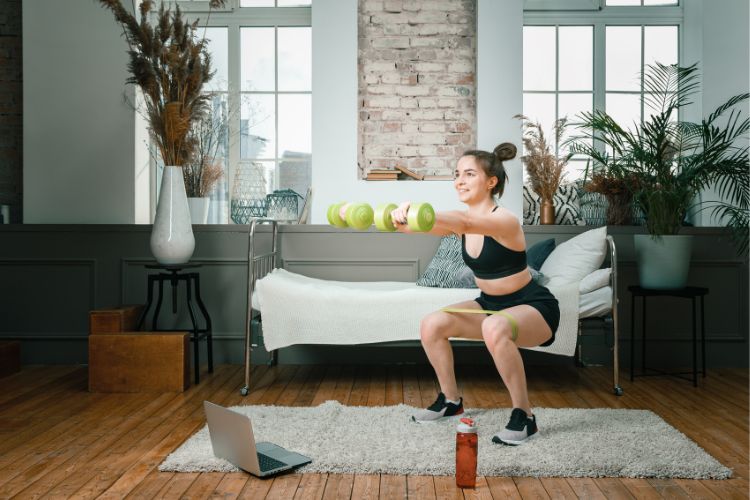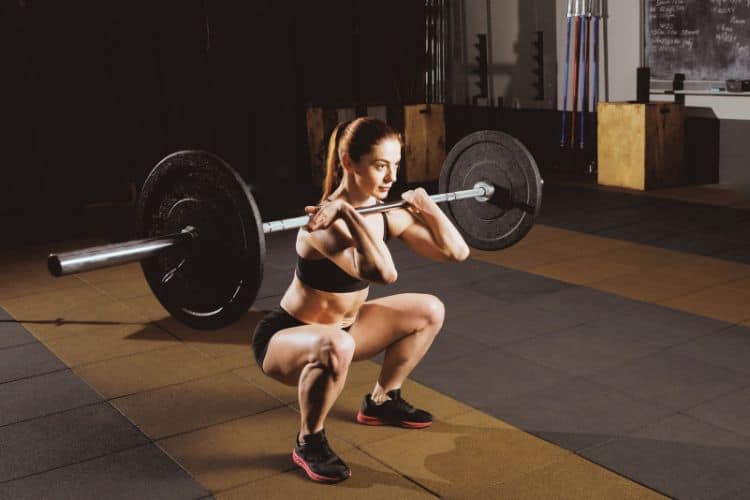Sign up for workout ideas, training advice, reviews of the latest gear and more.






While the fitness world is filled with an abundance of workout methodologies, High Intensity Interval Training (HIIT) has stood out for its efficiency, flexibility, and transformative potential. For women, especially, this style of workout can be an empowering tool to enhance both physical strength and mental resilience. Here’s a deep dive into the world of high-intensity workouts for women.
HIIT involves short bursts of intense exercises followed by low-intensity recovery periods or complete rest. Typically, these workouts can last anywhere from 15 to 30 minutes, making them a perfect choice for those with busy schedules.
Fat Loss: HIIT workouts can elevate your heart rate and boost metabolism, promoting fat burn both during the workout and in the subsequent hours, a phenomenon known as the ‘afterburn’ or Excess Post-Exercise Oxygen Consumption (EPOC).
Time Efficiency: With HIIT, you can achieve results in a shorter amount of time compared to traditional workouts. This is great news for working women, mothers, or anyone trying to squeeze fitness into a tight schedule.
Muscle Preservation: While conventional steady-state cardio can sometimes lead to muscle loss, HIIT allows women to retain their hard-earned muscles while ensuring most of the weight loss comes from fat stores.
Tabata: Originating from Dr. Izumi Tabata’s research in Japan, this involves 20 seconds of maximum effort followed by 10 seconds of rest, repeated eight times for a total of four minutes.
Cardio and Strength Circuits: Combine bodyweight exercises like push-ups, squats, and lunges with high-intensity moves such as jumping jacks or burpees. Do each exercise for 45 seconds, rest for 15 seconds, and repeat.
Treadmill Sprints: After a warm-up, sprint at maximum effort for 30 seconds, then walk or jog for a minute. Repeat for the desired number of rounds.
Hormonal Health: Women’s hormones fluctuate throughout the month. During certain phases of the menstrual cycle, women may feel more energetic and can push harder. Listening to your body and adjusting your workout intensity accordingly is crucial.
Bone Health: As women age, bone density can decrease. High-intensity workouts, when combined with strength training, can be beneficial in promoting bone health and preventing osteoporosis.
Post-Pregnancy: After childbirth, with a doctor’s clearance, HIIT can be an effective way for new moms to regain strength and fitness. However, it’s essential to start slow and focus on core-strengthening exercises.
Warm-Up: Always start with a 5-10 minute warm-up to prepare your body for the intense bursts.
Form Over Speed: As the name suggests, HIIT is intense. But it’s essential to prioritize correct form over how fast you can complete an exercise. Incorrect form can lead to injuries.
Stay Hydrated: Intense workouts mean intense sweating. Keep yourself hydrated before, during, and after the workout.
Rest and Recover: The intensity of HIIT demands proper recovery. Ensure you get adequate rest, and consider incorporating stretches or yoga on your off days.
While the physical benefits of HIIT are evident, the mental gains are just as noteworthy. Pushing through a challenging HIIT session can be a mental battle. Overcoming this challenge consistently not only builds physical stamina but also reinforces mental resilience, determination, and a sense of accomplishment. For many women, this translates into enhanced confidence and empowerment in other areas of life.
Having established the foundational knowledge of High Intensity Interval Training (HIIT) and its myriad of benefits for women, it’s essential to delve deeper. The more you understand, the better equipped you’ll be to harness its potential.
Metabolic Shift: When you engage in HIIT, your body primarily uses carbohydrates stored in muscles as glycogen for energy. As these reserves diminish during those high-intensity bursts, the body increases its reliance on fat as fuel during the recovery periods and post-workout.
Heart Health: Engaging in HIIT can result in improved cardiovascular health. By pushing the heart to work at maximum capacity and then allowing it to recover, it strengthens and becomes more efficient over time.
Hormonal Benefits: HIIT can result in the release of endorphins, the body’s natural painkillers. Moreover, it has been suggested that HIIT might positively impact hormones that regulate appetite, which can be a boon for weight management.
Mental Health: The intense focus required during HIIT can act as a form of meditation. For the duration of the workout, external stresses fade into the background, offering a mental reprieve. Additionally, the endorphin release can uplift mood and combat feelings of anxiety or depression.
Flexibility & Creativity: One of the most exciting aspects of HIIT is its adaptability. You can design your workout routines, alternating between your favorite exercises. This flexibility can keep workouts interesting and reduce the monotony often associated with routine fitness regimens.
Social Engagement: HIIT classes have burgeoned in gyms across the world. Joining a class can foster a sense of community, making the workout more enjoyable and increasing the likelihood of adherence.
For Muscle Tone: If your goal is muscle toning, incorporate weights into your HIIT sessions. Dumbbell squats, kettlebell swings, and weighted burpees can enhance muscle definition.
For Endurance: To enhance stamina, focus on longer intervals with shorter rest periods. This approach will challenge your cardiovascular system and increase your endurance over time.
For Flexibility: Combine HIIT with dynamic stretches. For instance, after a sprint interval, engage in lunges or leg swings.
Fear of Overtraining: It’s vital to listen to your body. If you feel persistent fatigue, muscle soreness, or decreased performance, it might be signs of overtraining. Ensure you intersperse your HIIT sessions with rest days or low-intensity workouts.
Customizing for Beginners: If you’re new to HIIT, start with shorter intervals and longer rest periods. Gradually increase the intensity as your fitness level improves.
Dealing with Injuries: If you have an existing injury, consult a fitness professional or physiotherapist to adapt exercises to your needs. For instance, low-impact exercises like cycling can replace high-impact ones like running.
To fuel your HIIT sessions and recover efficiently:
Pre-Workout: Opt for a combination of complex carbs and protein about 30 minutes to an hour before your workout. Think whole-grain toast with almond butter.
Post-Workout: Refuel with protein to aid muscle recovery and complex carbs to restore glycogen stores. A smoothie with spinach, banana, and protein powder can be a great choice.
Every day, women worldwide are discovering the transformative power of HIIT. From shedding post-pregnancy weight to embarking on a journey of self-love and body positivity, HIIT has been a cornerstone for many success stories. Join online communities, share your progress, and draw inspiration from fellow women who’ve elevated their lives with HIIT.
For the modern woman, HIIT is more than just a workout; it’s an emblem of strength, resilience, and empowerment. By understanding its science, harnessing its benefits, and adapting it to personal needs, you stand to transform not just your physique but your holistic well-being. Dive into the HIIT revolution and unleash the potent synergy of mind, body, and spirit.
Stay up to date on the latest women’s health, fitness and lifestyle trends and tips.